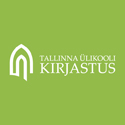Connectivity in Narratives of Turkish-English and Turkish-Russian Bilinguals
Abstract
The present study draws on the narrative production of the Turkish-English and Turkish-Russian bilingual children in an attempt to examine whether the use of connectivity elements in the oral narratives of the bilingual children diverges from that of monolingual Turkish children. In particular, the study aimed to examine the use of temporal connectivity elements in the oral narratives of the Turkish-English and Turkish-Russian bilingual children in comparison to Turkish monolingual children focusing on the use of tense/aspect markers utilized to anchor narratives, temporal converbs used to link clauses in narratives, and also temporal connectors used to link clauses. The data were collected from two bilingual groups, Turkish-Russian (Group 1) and Turkish-English (Group 2), consisting of five children each and the control group consisting of seven monolingual Turkish children. The analysis of the data revealed that the Turkish-English and Turkish-Russian bilingual children performed differently than their Turkish monolingual counterparts in how consistently they used tense/aspect markers to anchor their narratives and in how they used converbial markers to indicate the sequentiality of the events in their narratives. The results are discussed in relation to prior research and the typological peculiarities of the languages.
Keywords: bilingual language acquisition, Russian-Turkish, TurkishEnglish, connectivity, narratives
Full Text:
PDFDOI: https://doi.org/10.22601/PET.2022.07.01
Refbacks
- There are currently no refbacks.
Published by / Kirjastaja:

ISSN 2504-6616 (print/trükis)
ISSN 2504-6624 (online/võrguväljaanne)
